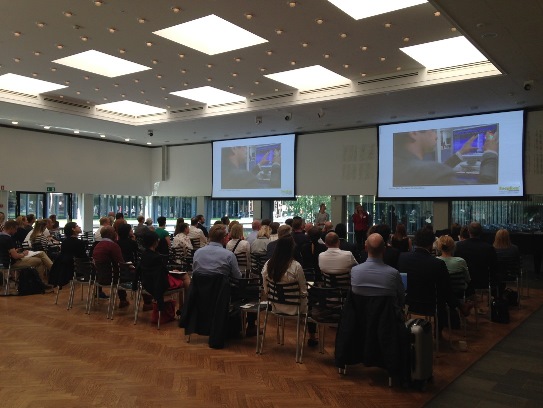
Workplace Trends conferences (link) look at the up-coming real trends in working spaces for the next 10-20 years. Since the first conference in 2002 they have been among the first to look at the now trending subjects of wellness, productivity, happiness, psychology, psychoacoustics, biophilia, agile & flexible working, cellular vs open plan, to name but a few.
These events are about sharing knowledge and connecting people and presentations are research & case study driven.
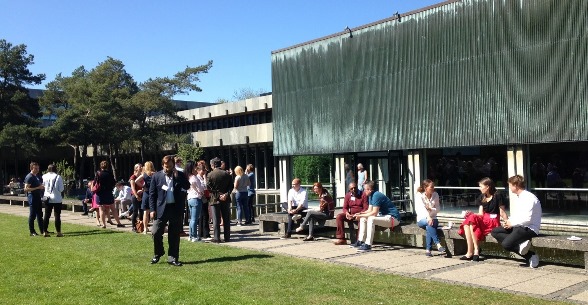
This year, on 9 May, together with DTU (Technical University of Denmark), Workplace Trends conference was “exported” to Copenhagen – the first time ever outside UK! Nigel Oseland from Workplace Unlimited and Carsten Svensson from Saint-Gobain Ecophon shared the chairmanship during the day.
The conference title was “Designing Environments for Wellbeing & Performance”, and please check the link here for all speakers and subjects with small abstracts.
The subjects covered important aspects of the indoor environments at workplaces (acoustics, lighting, air quality etc.), occupancy evaluation tools, a new Norwegian certification scheme, creativity and work cultures. The seminar was international (in English) but of course many participants came from Denmark and the Nordics. Participants were architects, designers, real estate and property developers, HR etc. and some 100 participants attended. The venue was the beautiful “Glassalen” at DTU in Copenhagen.
Below are the different speeches and presenters.
- Wellbeing and Performance: Stop Guessing – Start Gathering (Tim Oldman, Leesman)
- Why is it that the top problem with our workspaces has remained the same, year after year, yet has gone unsolved? (James Waddell, Habitat Soundscaping by Plantronics)
- Human Responses to Sound Stimulus in the Workplace (Paige Hodsman & Yvette Tietema, Saint-Gobain Ecophon)
- How Poor Indoor Environmental Quality Affects Performance in Work Environments and Educational Buildings (Pawel Wargocki, International Centre for Indoor Environment and Energy, DTU)
- The importance of good lighting conditions in the workplace (Charlotte De Reu and Tomas Fors, LUCTRA)
- Evidence of physical workplace effects on employee outcomes – How to support wellbeing, performance and many other employee needs (Rianne Appel-Meulenbroek, Eindhoven University of Technology)
- What does the perfect workplace look like? “SMAP” is trying to find out… (Marlene Dahle, MELLOMROM)
- Space For Creative Thinking: Design Principles for Working and Learning Environments (Christine Kohlert, RBSGROUP EU)
- The Joy of Work-Joy – A tale of two work cultures (Lene Becker, LAIKA, and Philip Tidd, Gensler)
Since this blog (Acoustic Bulletin) is mainly directed towards people with a specific interest in acoustics – this blogpost will mainly handle sound related subjects. Another more holistic article from this event will come onwards on the Ecophon website.
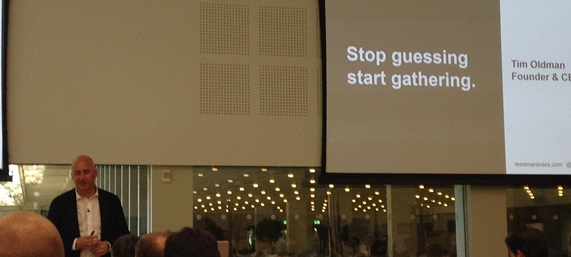
First out was Tim Oldman, founder of British Leesman Index, the largest independent workplace effectiveness database. The Leesman Index contains over 330,000 employee responses from more than 2,500 work places worldwide. Noise and poor acoustics are defined as true challenges in for example open-plan spaces and have an impact on the employee experience. Moreover – Leesman also took a close look at Activity Based Working and it seems really important to match this work style with behaviour and personality profile.
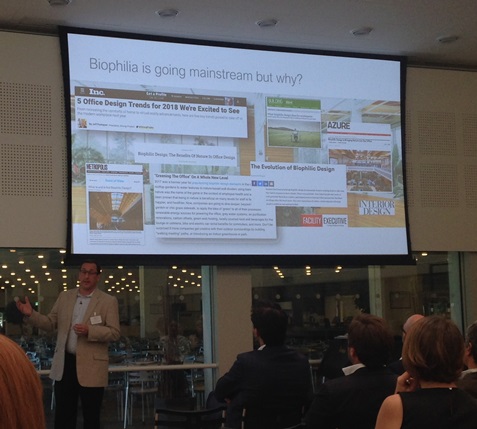
Another speaker was James Waddell from Plantronics, who introduced its Habitat Soundscaping Solution using the sound of water as speech masking sound. The Habitat Soundscaping consists of sensors, loudspeakers and visual effects – also actually visualising running water in the office.
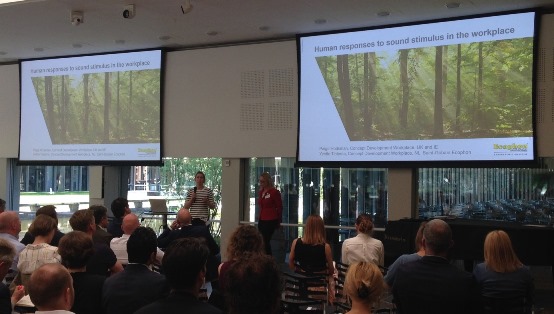
Yvette Tietema and Paige Hodsman of Saint-Gobain Ecophon focused on the human brain in correspondence to sound stimulus in the workplace. We are all individuals and different, and that also applies how we experience sound. Even if we are not conscious of surrounding speech, it affects our brains. They also highlighted the psychological aspects including using a psychoacoustic approach to better understand the needs of the office workers and as to be able to give better advice.
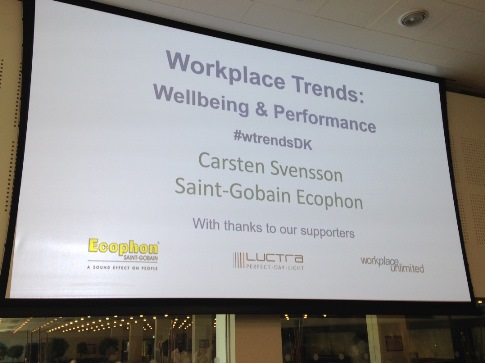
We are all different, was one conclusion of the day. But most likely we all strive for happiness, wellbeing and the ability to enjoy our work and be creative, productive and innovative. The challenge of the future workplace may be how to link this with the individual needs of different people.
The social media reach out was incredible, and you can check this link or the hashtag: #wtrendsDK
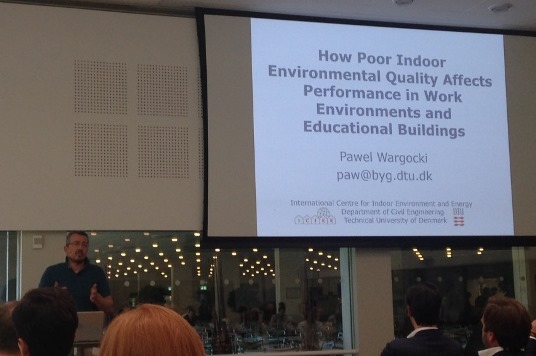
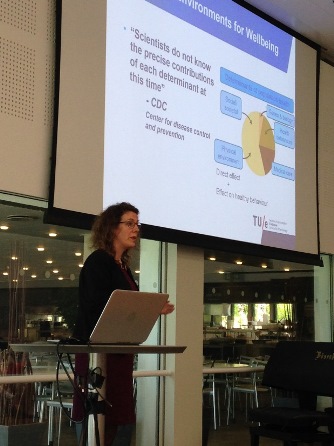
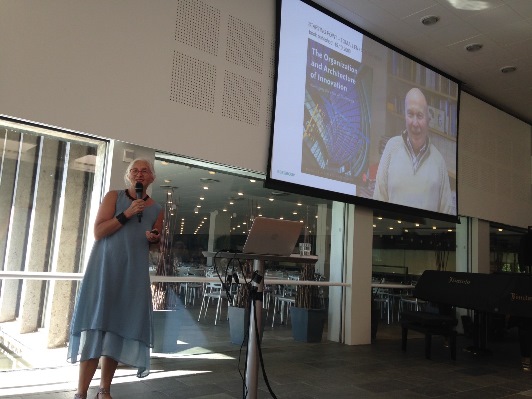
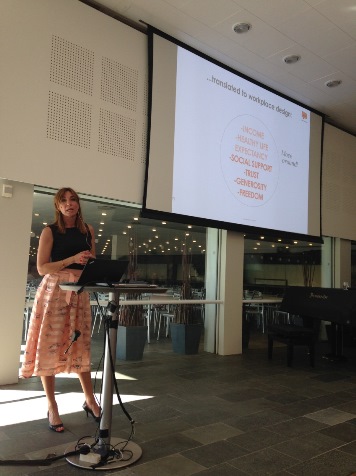
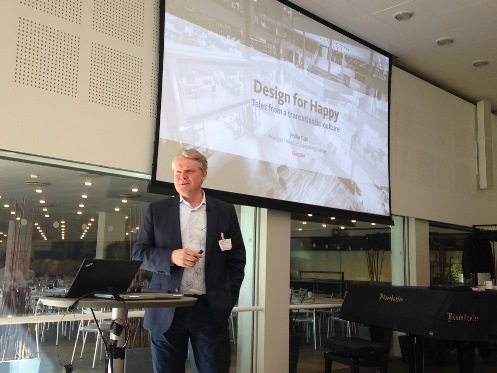
The day before, 8 May, Saint-Gobain Ecophon ran a workshop on Psychological & Physiological Factors in Office Design.

